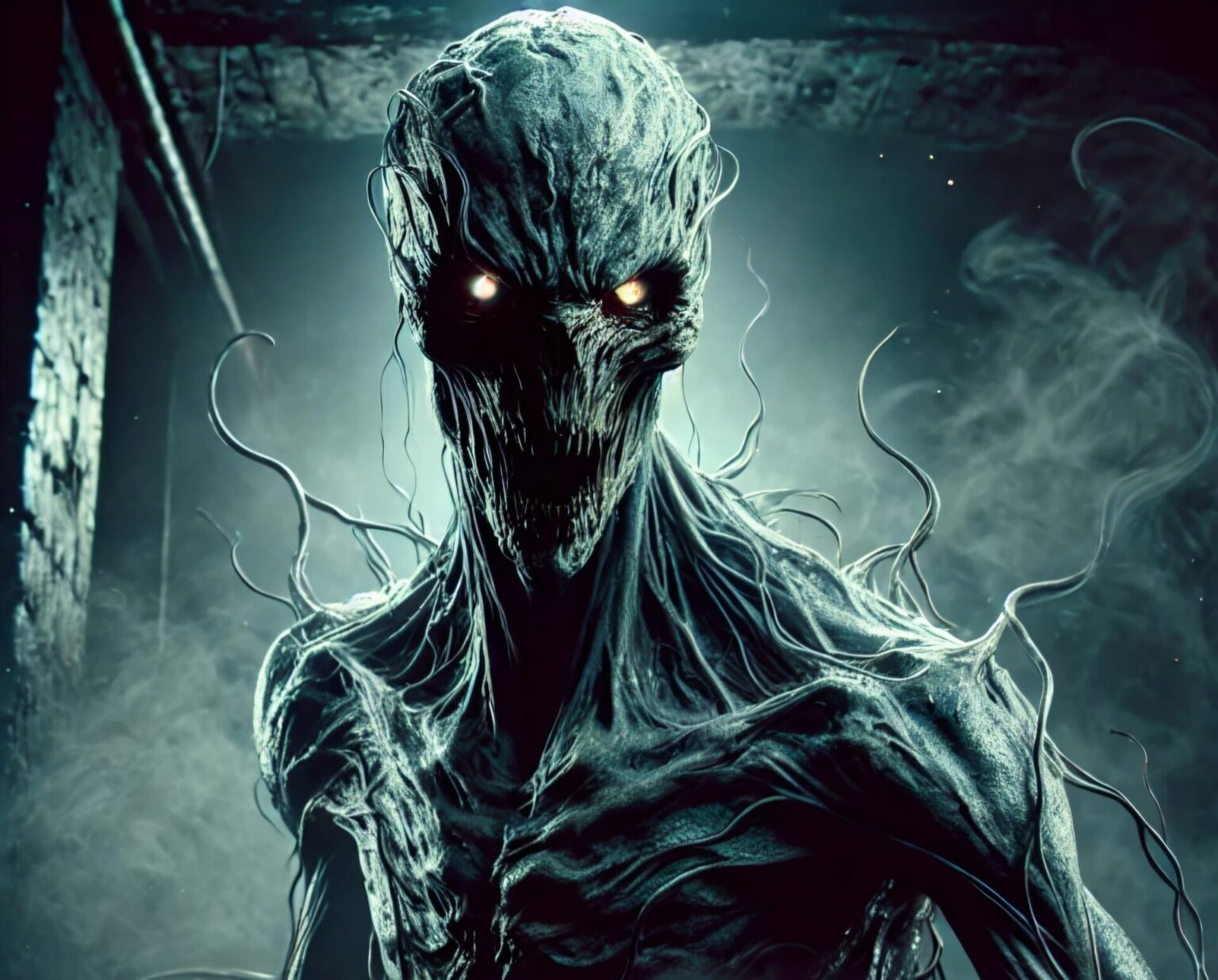An inhuman entity is a supernatural being that has never lived as a human and exists outside the realm of traditional spirits or ghosts. Unlike the lingering souls of the deceased, inhuman entities are often described as malevolent, ancient, and highly intelligent forces that interact with the physical world in unsettling ways.
These entities are not bound by human emotions or earthly attachments; instead, they operate with their own unknown motives, which may involve manipulation, deception, or even harm. Paranormal researchers, demonologists, and spiritual experts have documented encounters with inhuman entities for centuries, often categorizing them into various types, such as demons, shadow people, Djinn, elementals, and other supernatural beings.
While some may be neutral or mischievous, many of these entities are known for instilling intense fear, draining energy, and even causing physical or psychological distress to those who encounter them. Understanding the nature of inhuman entities is essential for recognizing their presence, distinguishing them from human spirits, and knowing how to protect oneself from potential dangers.
The paranormal world is full of unexplained phenomena, but few topics are as chilling and unsettling as inhuman entities. Unlike ghosts, which are believed to be the spirits of deceased humans, inhuman entities have never lived as people.
They are something else entirely—beings of unknown origin, often described as malevolent, deceptive, and incredibly powerful. These entities have been reported across different cultures and throughout history, taking on many forms—demons, shadow figures, Djinn, elementals, and other supernatural creatures.
Unlike a typical haunting, encounters with inhuman entities often involve physical attacks, psychological torment, and overwhelming feelings of dread. Some of these entities are believed to have existed for thousands of years, lurking in the shadows and interacting with the physical world in terrifying ways.
But what exactly are inhuman entities? Are they demons from religious texts, interdimensional beings, or something beyond our understanding? This article will explore the different types of inhuman entities, their historical origins, real-life paranormal cases, and how to protect yourself from these powerful forces.
If you’ve ever felt an unexplainable presence, seen a shadow move in the darkness, or experienced terrifying disturbances, you may have encountered something far more dangerous than a mere ghost.
When dealing with paranormal activity, one of the most important distinctions to make is whether the presence being encountered is a ghost (human spirit) or an inhuman entity:
While both are considered supernatural, their origins, behaviors, and interactions with the physical world are vastly different. Misidentifying an inhuman entity as a ghost can lead to serious consequences, as inhuman entities are often more dangerous and unpredictable.
- Ghosts: A ghost is generally believed to be the spirit or soul of a deceased human that remains in the physical world for various reasons. They may be tied to a location due to unfinished business, strong emotional attachments, or tragic deaths. Many ghosts are simply residual energy—a repeating imprint of past events—while others display intelligent awareness and can interact with the living.
- Inhuman Entities: These are beings that have never been human. They are often malevolent, deceptive, and highly intelligent, though some may be neutral or even protective. Unlike ghosts, inhuman entities are not bound by human emotions or earthly attachments. They exist independently and often have an agenda—whether it’s causing fear, feeding off negative energy, or manipulating their victims for sinister purposes,
- Ghosts: Most human spirits are not harmful. They may try to communicate with the living through EVP (Electronic Voice Phenomena), apparitions, or poltergeist activity. Some ghosts may seem frightening, but they rarely cause direct harm. Instead, they are often lost, confused, or simply reliving their past in a loop.
- Inhuman Entities: Unlike ghosts, inhuman entities tend to manipulate, deceive, and torment. Their actions are often calculated rather than random. They may mimic human voices, appear as false apparitions, or create terrifying manifestations to instill fear and drain emotional energy. Their behavior can escalate from simple disturbances to violent attacks, psychological manipulation, or even possession.
- Ghosts:
- Often appear as transparent apparitions, shadowy figures, or orbs.
- May cause mild poltergeist activity, such as flickering lights or objects moving.
- Usually confined to specific locations (e.g., old houses, battlefields, cemeteries).
- Communicate through subtle signs, such as whispers, touch, or apparitions.
- Can be sent away or crossed over through religious rituals, prayers, or personal acknowledgment.
- Inhumane Entities:
- Can take various terrifying forms, including shadow figures, grotesque creatures, or distorted human-like appearances.
- May physically harm people (scratches, bruises, bites, or pushing).
- Activity is often violent and aggressive, including slamming doors, throwing objects, and making guttural growls or hisses.
- Not bound to a specific location—can attach to individuals and follow them.
- Strong aversion to holy objects, religious prayers, or sacred spaces, often reacting violently to them.
- Ghosts: Many ghost encounters leave individuals curious, unsettled, or intrigued, but they rarely result in severe psychological distress. Some spirits may evoke sadness, nostalgia, or a feeling of being watched, but they typically do not create extreme paranoia or dread.
- Inhuman Entities: Encounters with inhuman entities often lead to severe psychological and emotional consequences. Victims frequently report:
- Persistent nightmares and sleep paralysis.
- Feelings of dread, hopelessness, and extreme anxiety.
- Unexplained depression, fatigue, or suicidal thoughts.
- Obsessive thoughts and irrational fears after an encounter.
In the upcoming novel, based on a month-long encounter by a British couple on holiday, an entity reveals itself in the form of night visitations. In THE SHOPKEEPER OF SALERNO, the young woman involved had a childhood trauma which made her vulnerable to the entity.
Vivid nightmares that left scratches and inexplicable scents, shadow figures and even a man standing outside the window of the house they were guests in was witnessed repeatedly. Usually, the being or entity assumes an amorphous form or even a silhouette of a bat or a human. The infestation progressed to where other household members were pushed and visited upon, including the owners of the house.
The entity was ascribed to a previous tragedy in the Italian home during World War II when the owner of the house, now a woman in her eighties, committed a crime in order to save her teenage niece. The entity disappears after several attempts by local clergy to bless the home and rid it of the infestation after the murder was committed.
More than forty years later, in 1985, the haunting and infestation resurges when the tourist couple from the UK stays as accidental houseguests to the now elderly woman and her niece. What catalyzed the entity to return to the house which was the site of violence? Was it the multiplicity of tragedies that permeated the neighborhood during WWII? Or was it the presence of unburied human remains of a man who murdered thousands of people as a Nazi soldier?
What is the nature of the entity that oppressed and infested the young British woman and also sought to terrify her own daughter miles away in a London suburb?
In some cases, prolonged exposure to an inhuman entity can lead to possession, where the entity attempts to take control of the victim’s thoughts, emotions, or physical body. This is never the case with human spirits, making this one of the most crucial distinctions.
- Ghosts: Some spirits respond positively to prayers, smudging rituals, or communication attempts. Many ghosts can be guided toward the light through religious intervention, energy cleansing, or personal closure from the living.
- Inhuman Entities: Often react violently or aggressively to religious symbols, holy water, and prayers. Instead of being banished peacefully, they may retaliate by intensifying their attacks, manipulating emotions, or increasing poltergeist activity.
- Ghosts: Some spirits respond positively to prayers, smudging rituals, or communication attempts. Many ghosts can be guided toward the light through religious intervention, energy cleansing, or personal closure from the living.
- Inhuman Entities: Often react violently or aggressively to religious symbols, holy water, and prayers. Instead of being banished peacefully, they may retaliate by intensifying their attacks, manipulating emotions, or increasing poltergeist activity.
- Ghosts: Ghostly activity tends to be sporadic and repetitive, with many hauntings following a pattern—such as footsteps, voices, or apparitions occurring at specific times. Once a spirit is acknowledged, activity often lessens or stops completely.
- Inhuman Entities: These entities do not follow predictable patterns. Instead, their activity usually escalates over time, becoming more aggressive and persistent. Unlike ghosts, which may leave if asked, inhuman entities tend to become more dangerous the longer they are ignored or provoked.
- Ghosts: Human spirits are often tied to a specific location, object, or traumatic event. They are not known to follow or attach themselves to individuals unless there is a strong personal connection (such as a deceased loved one).
- Inhuman Entities: These entities can attach to people, objects, or places. Some may enter a person’s life through:
- Engaging in occult practices (Ouija boards, séances, spirit channeling).
- Visiting locations with intense negative energy (cursed sites, abandoned hospitals, prisons).
- Extreme emotional distress (depression, grief, or trauma can attract inhuman entities that feed on negative energy).
Determining whether you are dealing with a ghost or an inhuman entity is crucial for how you should respond. If the entity in question is simply the lingering spirit of a deceased person, it is often harmless and may even seek closure.
However, if the activity is increasingly violent, psychologically distressing, or seems to escalate in a pattern of manipulation and fear, you may be dealing with something far more dangerous.
If you suspect an inhuman entity is involved, do not engage or challenge it directly. Instead, seek help from experienced paranormal investigators, demonologists, or religious experts who specialize in inhuman hauntings.
Ignoring or mishandling an inhuman entity can have severe consequences, including physical harm and long-term psychological distress.
Understanding these key differences between ghosts and inhuman entities can help paranormal investigators, researchers, and everyday individuals better navigate the supernatural realm while avoiding unnecessary danger.


